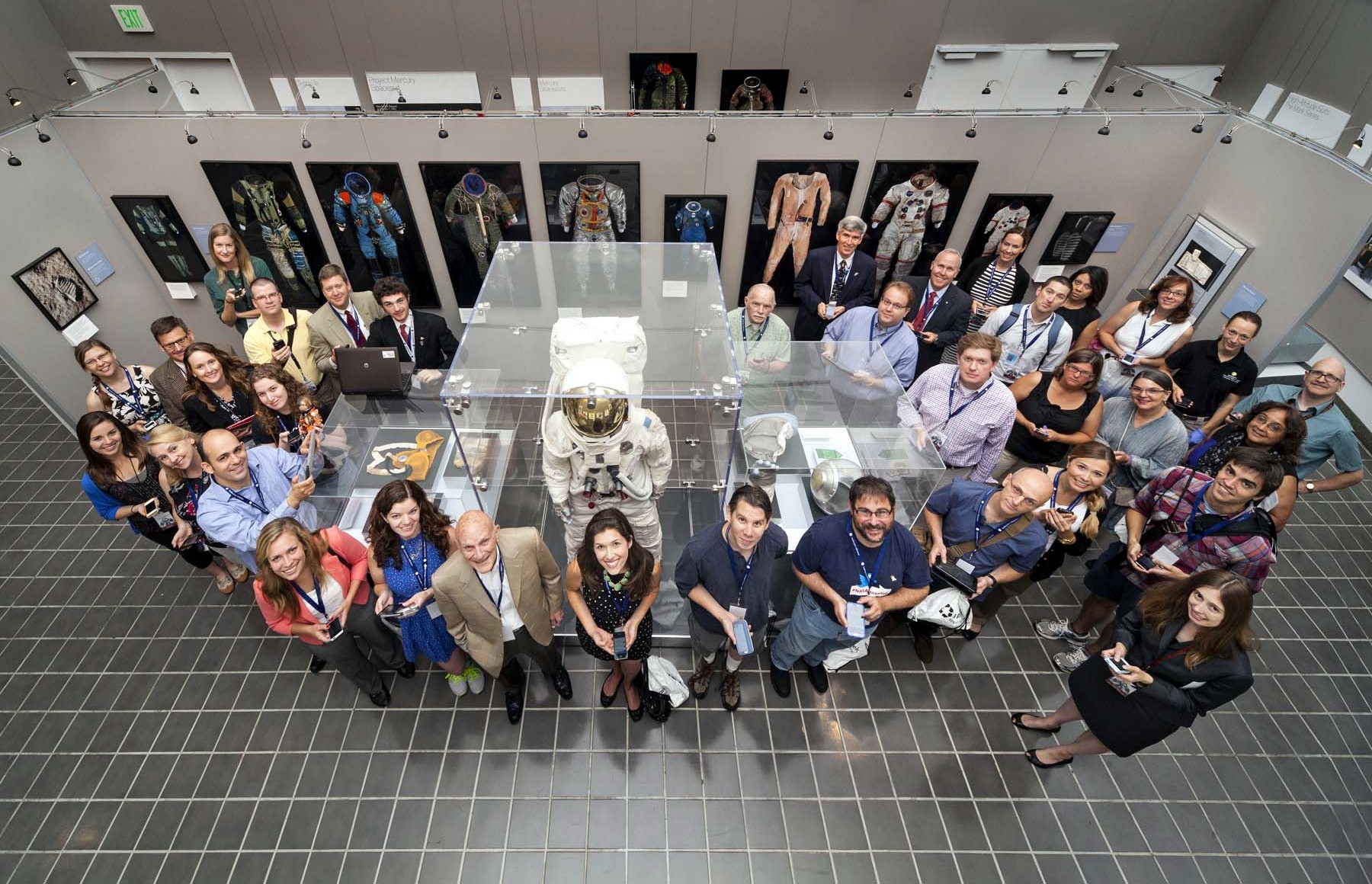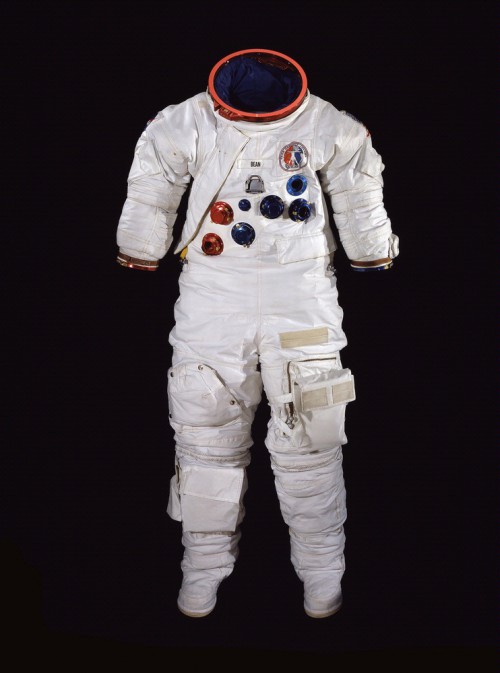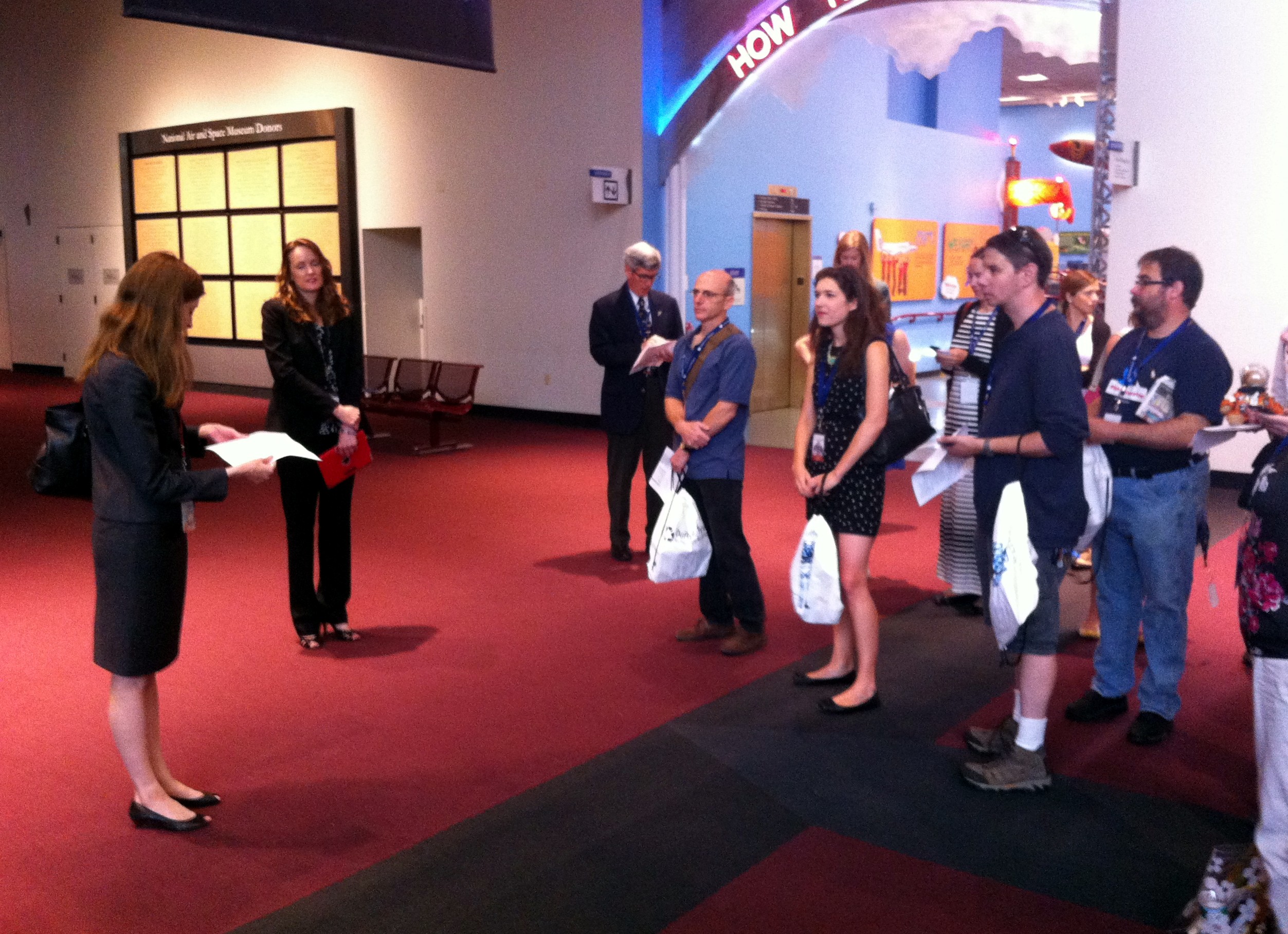
WASHINGTON, DC — A new exhibit, dubbed “Suited for Space,” opened to the public Friday, July 26, 2013, at the Smithsonian’s National Air and Space Museum. It’s organized by the Smithsonian Institution Traveling Exhibition Service (SITES) and has already appeared at numerous locations across the country. It made its original appearance at the Museum of Science and Industry in Chicago in April 2011 and explores the evolution of spacesuit development from the early twentieth century until the beginning of the space shuttle era.

The day before the public opening, the museum hosted a “Social” (formerly known as a “TweetUp”) for 15 lucky space enthusiasts. AmericaSpace got to come along for the ride.
Social participants got to hear from Dr. Cathy Lewis, curator of the exhibit. She explained that the exhibit came together after her predecessor, Amanda Young, along with museum photographer Mark Avino, put together an amazing book, entitled Spacesuits: The Smithsonian’s National Air and Space Museum Collection, Powerhouse Books, 2009. Soon after taking over from Amanda, Dr. Lewis discovered that SITES wanted to put together a traveling exhibit based on the book. She stated that “any curator knows a book and an exhibition are not the same thing. The latter requires objects, while the former is satisfied with illustrations.”
One of the first questions SITES asked was whether they could borrow a suit from the museum’s collection for inclusion in the exhibit. The answer was a resounding “No.” As explained in the book, and in the opening panels of the exhibit, spacesuits are built of material made to withstand the harsh elements of space for a very limited period of time, but over the long haul they are not very resilient and require strict handling, temperature, and humidity control. As a result, the exhibit consists primarily of large-scale photography, including x-rays, along with a few “un-flown” spacesuit artifacts.
The lucky “Socialites” also got to hear from former astronaut Ken Mattingly (Apollo 13 prime crew command module pilot, Apollo 16 command module pilot, and commander of STS-4 and STS-51-C), who was the astronaut representative for development and testing of the Apollo spacesuit and backpack. Ken explained his role in early spacesuit development and his dealings with contractors International Latex Corporation (ILC) and Hamilton Standard. He pointed out that one of the most difficult tasks in developing a functioning suit was creating a pressurized environment while still allowing for ease of movement. This was particularly difficult with the movement of the fingers in the gloves.

The Social attendees also heard from former astronaut Tom Jones (STS-59, 68, 80, and 98), who gave a video presentation and talk which highlighted his experience with the shuttle, International Space Station (ISS)-era spacesuit. Tom explained that Apollo-era suits were custom fit for each astronaut, but that later shuttle, ISS-era suits are made up of modular components which can be pieced together and made to fit 95 percent of the astronaut population.
Lastly, those in attendance heard from photographer Mark Avino. He explained the process of photographing spacesuits from the museum’s collection for Amanda Young’s book and for the exhibit. In particular, he described the meticulous process of producing x-ray images of entire spacesuits, which involved the “stitching” together of up to 30 separate scans.
Want to keep up-to-date with all things space? Be sure to “Like” Retro Space Images and AmericaSpace on Facebook and follow us on Twitter: @AmericaSpace
Missions » Apollo »




If there could be some way to showcase any of the Apollo moonwalker spacesuits, that would be a huge addition to the exhibit. I understand the preservation issues, especially with the lunar surface suits, but imagine if we could see one up close and personal! A fascinating artifact, to be sure.
What’s upwards good website! Male. Superb. Awesome. We’ll take a note of your site and make nourishes on top of that? Now i am happy to locate a number of information in this article inside organize, we start to use exercise excess techniques in this particular consider, many thanks for spreading.